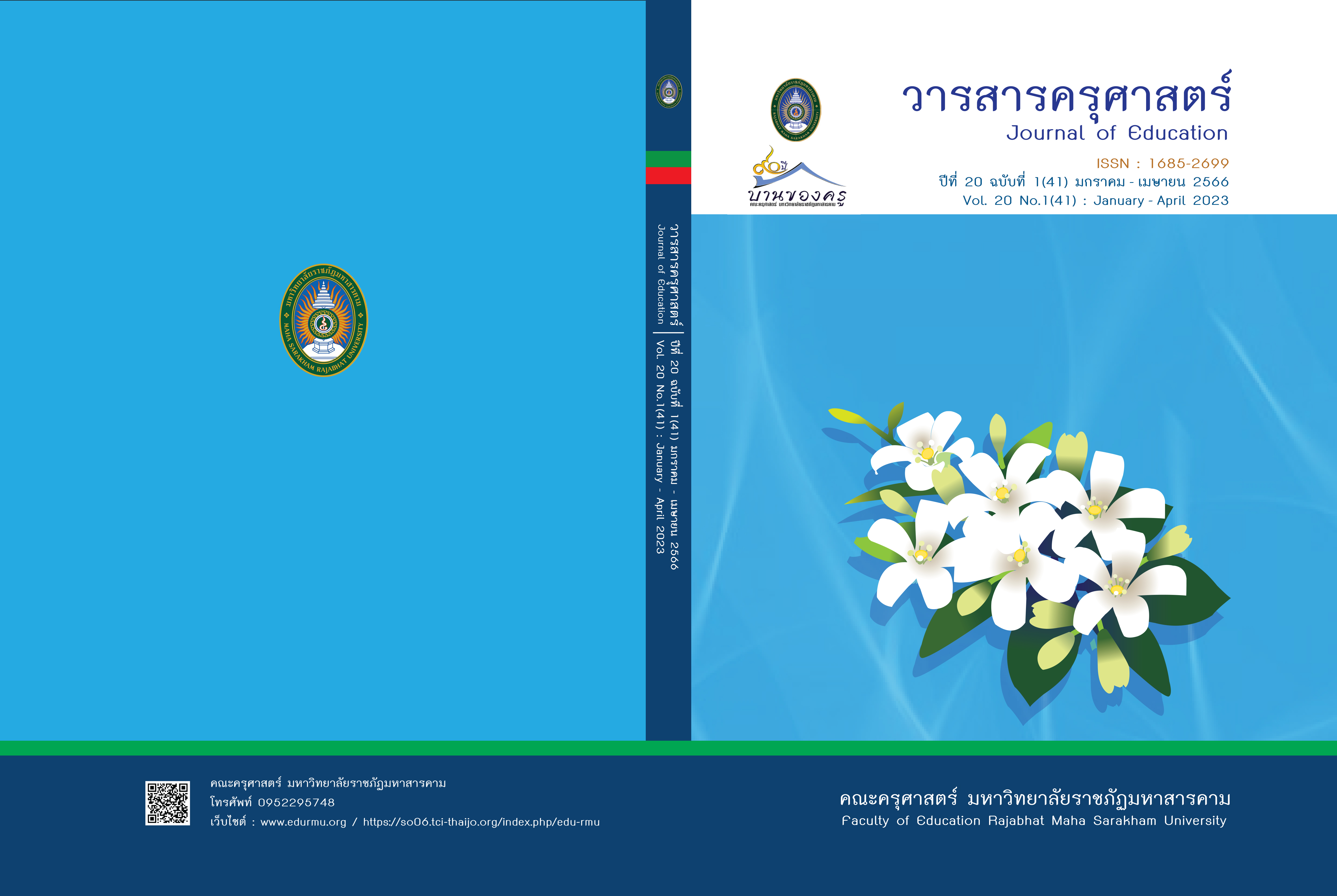A Study of Executive Roles in Promoting Professional Learning Community of Teachers in School Under Kalasin Primary Educational Service Area Office 3
Main Article Content
Abstract
This research aims to 1) study the elements of executive role in promoting professional learning community of teachers in school. 2) to study the role of executives in promoting a community of professional learning of teachers in school and 3) to compare of the level of executive roles in promoting professional learning community of teachers in school under kalasin primary educational service area office 3 classified by the experience of the executive and school size research methodology with mixed methods by using a pioneering survey pattern which divides into 2 phases. Phase 1: study the element of executive role in promote professional learning community of teachers in school. Phase 2: Study and compare of the level of executive roles in promoting professional learning community of teachers in school. The population are the school principals under kalasin primary educational service area office 3. There are 198 People, a main group of informant is the directors of the school, There are 198 People, and The teachers on duty head of the learning group, There are 639 People, total 837 People in the research consists of interviews and questionnaires. Analyze the data with basic statistics and content analysis.
The results of this research found that:
1. The elements of executive role in promoting professional learning community of teachers in school consists of 7 roles are planning role, role in creating of the morale and encouragement, Participative management roles, The role of teacher and personal development promotion, Instructional Leadership role, Co-leadership role and reflection role.
2. The overall level of executive roles in promoting professional learning community of teachers in school under Kalasin Primary Education Service Area Office 3 are high that considering side by side is high level too.
3.To compare the level of executive roles in promoting professional learning community of the teachers in school under Kalasin Primary Education Service Area Office 3 as follow.
3.1 The experiences of executive with different experience in school. There were different levels of roles of administrators in promoting professional learning communities of teachers in schools.
3.2 The executive in different school size has different roles in prompting professional learning communities of teachers in school.
Article Details

This work is licensed under a Creative Commons Attribution-NonCommercial-NoDerivatives 4.0 International License.
ข้อกำหนดเบื้องต้นที่ผู้นิพนธ์(ผู้ส่งบทความ) ควรทราบ
1. ผู้นิพนธ์ที่ประสงค์จะลงตีพิมพ์บทความกับวารสาร ตั้งแต่เดือนมกราคม 2563 เป็นต้นไป ให้ใช้รูปแบบใหม่ (Template 2563) โดยสามารถดูตัวอย่างได้ที่เมนู GUIDELINES
2. จะตีพิมพ์และเผยแพร่ได้ ต้องผ่านการประเมินจากผู้ทรงคุณวุฒิ (Peer Review)
3. การประเมินบทความโดยผู้ทรงคุณวุฒิ (Peer Review) เป็นแบบ Double Blind
4. การอ้างอิงบทความใช้หลักเกณฑ์ APA (American Psychological Association) คลิก
5. บทความถูกปฏิเสธการตีพิมพ์ ไม่ผ่านการประเมิน ผู้นิพนธ์ขอยกเลิกเองหรือชำระเงินก่อนได้รับการอนุมัติ ทางวารสารไม่มีนโยบายการคืนเงิน
References
ดวงกมล กิ่งจําปา. (2555). บทบาทของผู้บริหารสถานศึกษาในการส่งเสริมงานเทคโนโลยีทาง การศึกษา
สังกัดสำนักงานเขตพื้นที่การศึกษาปทุมธานี เขต 2. (วิทยานิพนธ์ปริญญา มหาบัณฑิต). มหาวิทยาลัยเทคโนโลยีราชมงคลธัญบุรี.
ประทวน บุญรักษา. (2555). บทบาทหน้าที่ของผู้บริหารและการเป็นผู้บริหารมืออาชีพ. แหล่งที่มา
https://www.academia.edu/ สืบค้นเมื่อ 9 ต.ค. 2563.
มนตรี แย้มกสิกร. (2559). ชุมชนแห่งการเรียนรู้วิชาชีพ : ความท้าทายต่อการเปลี่ยนแปลงตนเองของครูเอกสารประกอบการประชุมวิชาการคุรุสภา ประจำปี 2559.
สำนักงานเขตพื้นที่การศึกษาประถมศึกษากาฬสินธุ์ เขต 3. (2564). ผลการบริหารและการจัดการของสำนักงานเขตพื้นที่การศึกษาประถมศึกษากาฬสินธุ์ เขต 3 ปีการศึกษา 2564.
สำนักพัฒนาครูและบุคลากรการศึกษาขั้นพื้นฐาน. (2560). คู่มือการอบรมคณะกรรมการขับเคลื่อน
กระบวนการ PLC (Professional Learning Community) “ชุมชนการเรียนรู้ทางวิชาชีพ” สู่สถานศึกษา
ระดับสำนักงานเขตพื้นที่การศึกษา. กรุงเทพฯ : สำนักพัฒนาครูและบุคลากรการศึกษาขั้นพื้นฐาน.
Giles, C. and Hargreaves, A. (2006). The Sustainability of Innovative Schools as Learning Organizations
and Professional Learning Communities During Standardized Reform. Educational Administration Quarterly. Vol. 42, No.1 (February 2006): 124-156.


